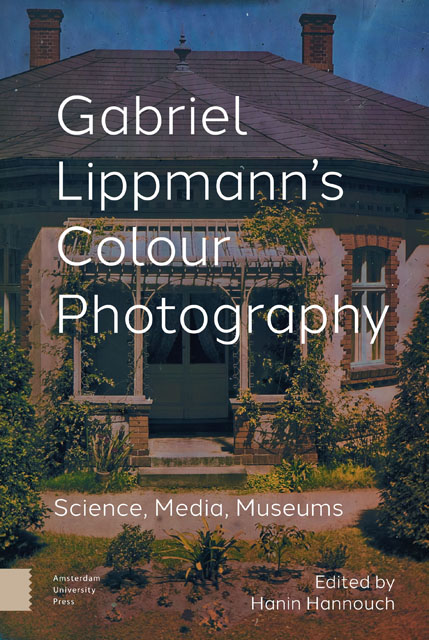Book contents
- Frontmatter
- Table of contents
- Gabriel Lippmann’s Colour Photography: A Critical Introduction
- Part I The Science of Colour Photography and the Colour Photography of Science
- Part II Media History, Aesthetics, and Culture
- Part III Contemporary Reception and Future Trajectories
- Afterword: Building Bridges over Standing Waves
- Index
2 - Lippmann’s Interferential Colour Photography: A Juncture between the Histories of Spectroscopy and Photography
Published online by Cambridge University Press: 16 November 2022
- Frontmatter
- Table of contents
- Gabriel Lippmann’s Colour Photography: A Critical Introduction
- Part I The Science of Colour Photography and the Colour Photography of Science
- Part II Media History, Aesthetics, and Culture
- Part III Contemporary Reception and Future Trajectories
- Afterword: Building Bridges over Standing Waves
- Index
Summary
Abstract
This contribution to the histories of science and photography locates Lippmann photography at the crossroads between two trajectories: the early modern pursuit of improved and precise documentation and mapping of the solar spectrum by novel experimental and technical methods, on one hand, and the rise and institutionalisation of scientific photography at the turn of the nineteenth into the twentieth centuries, on the other. The award of the Nobel Prize in Physics to Gabriel Lippmann in 1908 for developing his process of interferometric colour photography expresses this juncture between scientific and technical inquiry. Even though Lippmann photography was practiced for only about fifteen years by very few scientifically oriented photographers, it was nonetheless an important predecessor to the later holograph.
Keywords: interferential colour photography, spectroscopy, interferometry, history of science, history of photography
Since the time of Sir Isaac Newton (1643–1727), when the spectrum first became a research object in its own right and shook off its bad reputation as a disturbing, even frightful phenomenon, the recording of the coloured spectrum in its full variegated glory proved to be a protracted challenge (Hentschel 2002). Various techniques were tested out and used, among them woodcut, copper engraving, and lithography, and, since 1839, also photography. In the early nineteenth century, hand-colouring of engravings produced some of the most impressive results (such as here in Fig. 4).
However, hand-colouring depended on the skill of the artist in capturing the subtle gradations of tone. Such high-quality plates were consequently rare and not reproducible at the time. Chromolithography, which was widely practised since the 1830s, took a substantial step forwards, but the generation of colours by superpositions of layers of various printed primary colours (up to six) remained insufficient. Daguerreotype, talbotype, and other early forms of photography all had the disadvantage of being recordings in black and white. Furthermore, early photography had severe problems with colour sensitivity, especially in problematic colour ranges such as orange or green. The solar spectrum actually served as the preferred test object for every new photographic process. The resulting exposure directly displays the relative sensitivity to the different components of the continuous spectrum. Any broader gaps in the bright continuous spectrum became immediately visible. Thus, the main goal of spectroscopists and photographers alike was to obtain a faithful representation of the whole spectrum in colour.
- Type
- Chapter
- Information
- Gabriel Lippmann's Colour PhotographyScience, Media, Museums, pp. 63 - 90Publisher: Amsterdam University PressPrint publication year: 2022



